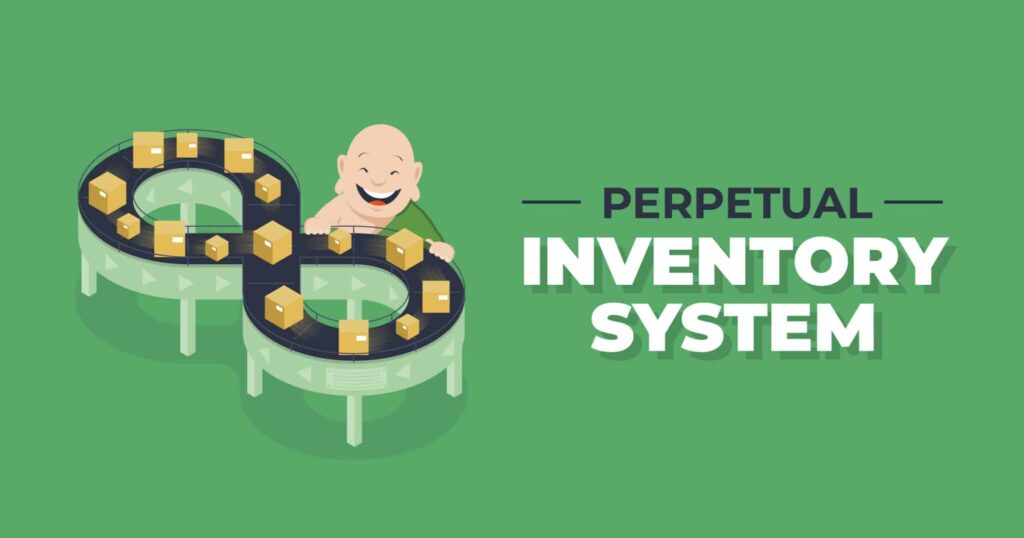Perpetual inventory. That sounds promising, doesn’t it? What eCommerce owner wouldn’t love a perpetual flow of products guaranteed to never run out? Well, a perpetual inventory system does constantly monitor the flow of products in and out of your warehouse, but there’s a bit more to managing the inventory than that.
In this blog we’re going to explain what a perpetual inventory system does, the difference between it and other inventory systems, and why it’s the ideal solution for omnichannel eCommerce businesses.
What is a Perpetual Inventory System?
A perpetual inventory system takes advantage of software integrations and technology to give you an accurate inventory count constantly — okay, perpetually. Merchandise is scanned into the system as it is received, and scanned again as it is sold. The system automatically updates inventory in your warehouse management system and/or inventory management system, and recalculates cost of goods sold (COGS) in your accounting system, whether you use FIFO (First-In, First-Out), LIFO (Last-In, First-Out), or weighted average cost for inventory valuation.
Perpetual inventory systems are used within retail operations at point of sale, and within fulfillment and distribution centers for eCommerce D2C and B2B fulfillment. This type of system does require IMS and WMS integrations to take full advantage of the features. The cost of this technology may be counterproductive for small eCommerce businesses, but if they outsource fulfillment to a technology forward 3PL (third-party logistics provider) they can enjoy the same benefits.
Perpetual Inventory vs. Periodic Inventory
If you’ve ever gone to a retail store, only to be stopped at the door by a sign saying “closed for inventory,” that company is using a periodic inventory system (sorry, Homer). Workers inside are physically counting every SKU in the building to make sure the amount of each item they have in the store matches the amount they have in their records. Smaller businesses might still be using this method (and using spreadsheets to collect data!) but the process has improved over the years with the use of handheld scanners and software systems to automatically capture the data. Still, to get an accurate picture at a specific point in time using this method, a business usually has to stop all orders/sales and shut down completely while counting inventory. One tactic a business can implement to minimize shutdown time is cycle counting.
Cycle Counting is a form of periodic inventory that counts only certain portions of inventory at a time, eventually cycling through all the SKUs within, say, a year. Fast-moving SKUs might get counted every week, while slower moving items may get counted monthly, quarterly, or annually. A business that uses cycle counting doesn’t have to close for a long period of time to take total inventory; they just need to account for one shelf, bay, or department at a time. The scheduling and process of when and how to do this is handled through your inventory management system.
Advantages of a Perpetual Inventory System
The biggest advantage of a perpetual inventory system is that it helps prevent stockouts (which can lead to backorders), and can keep you from paying too much for storage of overstocked items. Also, if your inventory is stored in a warehouse far from your office, a system that lets you see what’s happening at all times is essential for performance and peace of mind.
Every team across your business can benefit from having real-time inventory information at their fingertips. Inventory managers can calculate the ideal EOQ (Economic Order Quantity) to minimize warehousing costs and set up reorder points accordingly with automatic adjustments for sales increases or decreases. Forecasting inventory is easier too with historical sales data and inventory levels for comparison.
Product teams can track fast or slow-moving items. Customer service has more insight into what’s happening so they can better resolve problems. Sales and marketing can track orders, promotional results, and sales trends. And the accounting team always has accurate numbers for regulatory reporting of assets at the end of every accounting period.
Furthermore, when discrepancies are found, usually due to lost, damaged, or stolen goods, a physical count can take place. Many businesses conduct periodic inventory of some or all of their merchandise at least once a year, in addition to using a perpetual inventory system.
Final Count
Perpetual inventory systems have many advantages over periodic inventory systems, namely access to real-time inventory data whenever you need it. If you have an inventory management system that is fully integrated with a robust warehouse management system, it’s likely you are already enjoying the benefits of a perpetual inventory system. But it’s a big investment for a small business.
If you’ve struggled with managing inventory and getting real-time data from your existing system, it may be time to switch to a tech-forward 3PL like ShipMonk that already has these systems in place. Contact ShipMonk for a demo of our proprietary 3PL eCommerce fulfillment platform, and see how a perpetual inventory system can help your fast-growing businesses better manage its products!





